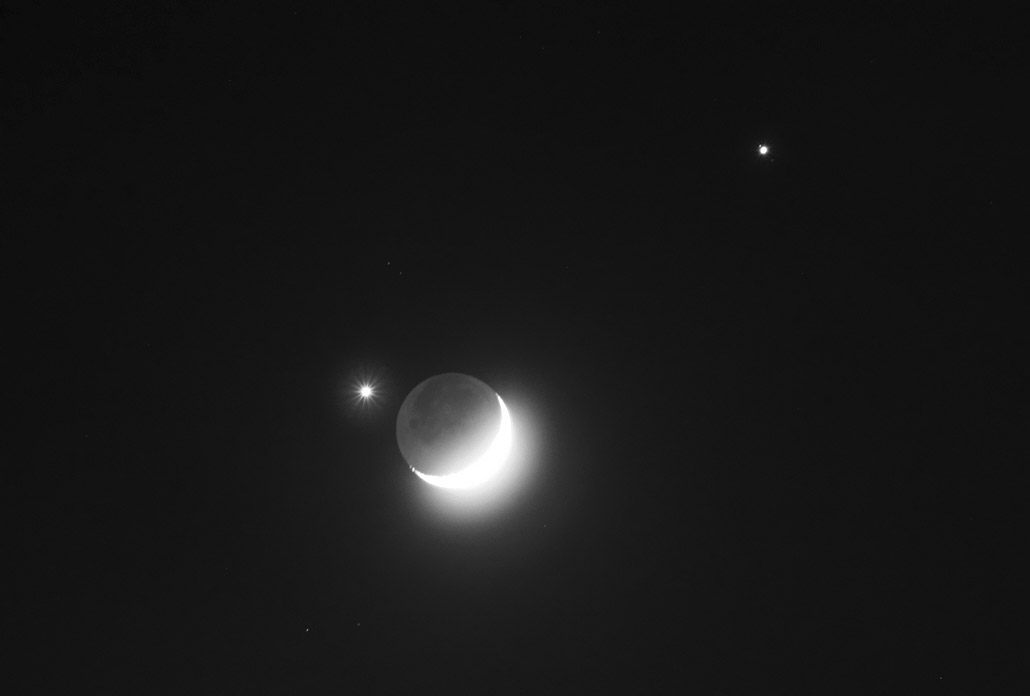April 20, 2009
Why not Venus?

image by Panagiotis Nikolakakos, Sparta, Greece
One of the greatest glories of Earth is its moon. From Earth outward in the solar system all planets (and even the wanna be planet Pluto) have moons. Jupiter, at top right in this lovely image, has dozens of Moons (two are visible), and Earth, whose reflected light falls on the darker portion of our Moon, has only one. Why doesn't Venus (dazzling next to the Moon) have any? No one knows for sure, which is a perfect opportunity for speculative theories. A common theory is tied to the fact that Venus rotates very slowly, backwards - at least compared to the rotation directions of other planets. Another input is the current belief that Earth's Moon formed as a result of a giant impact that ejected material from the projectile and Earth into orbit around the Earth where it accreted to form the Moon. Three years ago two CalTech scientists combined this information to suggest that Venus suffered two giant impacts, during which it gained and lost a moon. The proposal was that the first impact created a moon which began to spiral away from Venus. The second giant impact reversed the direction of Venus' spin, which gravitationally caused the moon to move back toward Venus and ultimately collide with it. A moon may have been produced by the second giant impact but if so it collided with the earlier one as it fell towards the planet. This is an outrageous theory, calling for two major events that we have no evidence for. But, it does explain two observations that are otherwise mysterious.
Chuck Wood
Technical Details
Dec. 1, 2008, 18:50. Canon 450 d, iso 400, f/18, 30sec.
Related Links
An animation of the December 1, 2008 triple conjunction.
Yesterday's LPOD: Red Moon Rising
Tomorrow's LPOD: Just a Piece
COMMENTS?
Register, Log in, and join in the comments.



